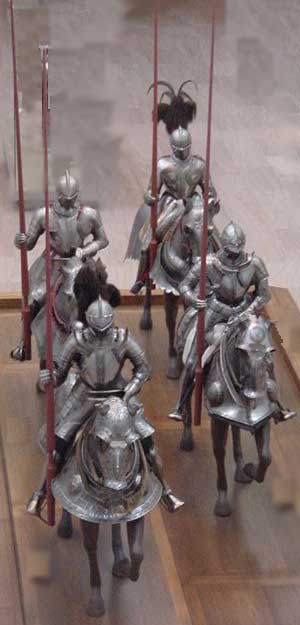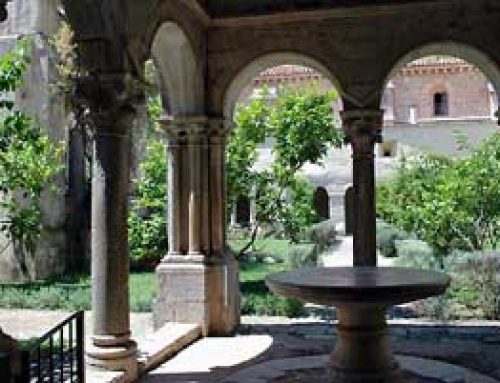
Chaucer’s Knight’s Tale: Medieval knights in the Metropolitan Museum of Art
A story about Theseus
Chaucer set his Knight’s Tale in ancient Greece, and it’s about Theseus, the king of Athens in Greek mythology. (So we can see that these medieval people knew all about Greek mythology!).
Who was Theseus?
And the Amazons?
Who was Chaucer?
More medieval literature
All our medieval Europe articles
In the story, Theseus is just coming back to Athens after a war with the Amazons, where he ended up marrying the Amazon queen. He’s bringing the queen, Hippolyta, back to Athens, along with the queen’s little sister Emelye (modern Emily).
Theseus takes two young prisoners
As soon as Theseus gets to Athens, a group of crying women, dressed in black, beg Theseus to help them. A tyrant, Creon, has captured their city, Thebes, and killed their husbands, and Creon won’t even let them bury their husbands.
What’s a tyrant?
More about Thebes
Theseus immediately goes to Thebes, kills Creon, and captures the city. He has the women’s husbands properly buried. But two princes from Creon’s army, who are cousins, are only wounded. Theseus takes the princes back with him to Athens, to be his prisoners forever.
The brothers fall in love with Emelye
Several years later, the beautiful Emelye is walking in the garden below the tower where the princes are in prison. She sings and picks flowers, and one of the princes, Palamoun, falls in love with her. He prays to the god Venus that Emelye will help him and his cousin get out of prison.
The god Venus

Platamon Castle, Greece (1204 AD)
Then the other prince, Arcite, also looks out the window, and he falls in love with Emelye too! The two princes fight over her. But they’re both in prison still.
After some months have gone by, Venus answers Palmoun’s prayer – partly. One of Arcite’s friends comes by and convinces Theseus to let Arcite go – but Palamoun has to stay in prison.
The princes are both upset. Arcite is sad because he has to go and won’t be able to look at Emelye out the window anymore, and Palamoun is sad because he has to stay in prison.
They fight over Emelye
Then Palamoun also escapes from prison. He meets his brother Arcite, and they start fighting with swords over who is to marry Emelye. Theseus finds them fighting, and they confess the whole story. He is sympathetic to their love, and tells them that they will have to fight each other for Emelye’s hand in a big tournament.
Medieval tournaments
 A great tournament decides Emelye’s fate
A great tournament decides Emelye’s fate
Before the tournament, Palamoun prays to Venus that he should get to marry Emelye. Arcite prays to Mars that he should win the tournament, and Emelye prays to Diana that she shouldn’t have to marry either of these crazy strangers.
The god Mars
Who was Diana?
Venus answers that Palamoun will get his wish, Mars answers that Arcite will get his wish, but Diana tells Emelye that she should marry one of these men.
And sure enough, Arcite wins the tournament but dies of his wounds, so that in the end Palamoun gets to marry Emelye, and they live happily ever after. Or Palamoun does, anyway.
Learn by doing: holding a tournament
The Knight’s Tale
The Miller’s Tale
The Clerk’s Tale
The Wife of Bath’s Tale
Bibliography and further reading about Geoffrey Chaucer:
Chaucer’s Canterbury Tales, rewritten by Marcia Williams (2007). For kids, nine of Chaucer’s tales retold, including some of the funny ones. Edited to be appropriate for kids, with funny pictures.
The Canterbury Tales: In Modern English , by Geoffrey Chaucer, translated by Neville Coghill (2000). The complete text, translated into modern English. Some stories may not be appropriate for kids.




